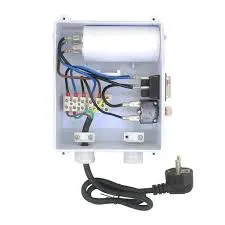Understanding Cloth Wiring Harness Tape A Comprehensive Overview
In today’s world, where technology intertwines seamlessly with everyday life, the need for effective and reliable electrical connections has never been greater. As a vital component in numerous applications, wiring harnesses serve to organize and protect electrical wires in vehicles, electronics, and various industrial settings. To ensure the longevity and performance of these harnesses, cloth wiring harness tape has emerged as an essential material.
What is Cloth Wiring Harness Tape?
Cloth wiring harness tape is a specialized type of adhesive tape designed to wrap and bundle electrical wires and cables. Made from a blend of woven fabric and pressure-sensitive adhesive, this tape is characterized by its durability, flexibility, and resistance to wear. Unlike plastic or vinyl tapes, cloth tape offers a more robust and tactile solution for harnessing wires, making it ideal for applications where friction and movement are a concern.
Key Features and Benefits
1. Durability and Strength Cloth wiring harness tape is engineered to withstand extreme conditions, including high temperatures and exposure to chemicals. This resilience ensures that wires remain protected even in the most demanding environments, such as automotive engines or industrial machinery.
2. Flexibility One of the standout features of cloth tape is its ability to conform to various shapes and sizes. This flexibility allows for a snug fit around different wiring configurations, helping to prevent abrasion and potential damage to the wires.
3. Noise Reduction When bundled together, wires can create noise due to vibration or movement. Cloth wiring harness tape helps dampen these vibrations, leading to quieter operation in vehicles or machinery. This quality is crucial in automotive applications where sound insulation is important for both performance and comfort.
cloth wiring harness tape

4. Improved Aesthetics Unlike traditional electrical tapes, which can often appear unsightly, cloth wiring harness tape comes in various colors and finishes. This variety allows manufacturers and technicians to not only protect the wiring but also enhance the visual appeal of the installations.
5. Ease of Use Cloth tape is easy to cut and apply, making it a convenient choice for professionals and DIY enthusiasts alike. Its adhesive backing provides a secure hold, ensuring that the tape remains in place without the need for additional fasteners.
Applications of Cloth Wiring Harness Tape
Cloth wiring harness tape finds its applications across a diverse range of industries. In the automotive sector, it is commonly used to wrap cables and wires in both interior and exterior applications. Its ability to withstand heat makes it perfect for engine compartments where traditional tapes might fail.
In the aerospace industry, where reliability is paramount, cloth tape is utilized to organize and protect wiring bundles in aircraft. Its lightweight nature also complements the stringent weight requirements for aviation.
Beyond transportation, cloth wiring harness tape is also used in consumer electronics, where it helps manage the intricate wiring systems found in devices such as televisions, computers, and home appliances. The tape's flexibility allows for neat and organized wiring, reducing the risk of short circuits and electrical failures.
Conclusion
In conclusion, cloth wiring harness tape is an indispensable tool in the realm of electrical connections and wiring management. Its unique combination of durability, flexibility, and aesthetic appeal makes it a preferred choice across multiple industries. As technology continues to advance and demand for more efficient and reliable electrical systems grows, materials like cloth wiring harness tape will play a crucial role in shaping the future of electrical engineering and design. Whether in vehicles, airplanes, or electronic devices, cloth wiring harness tape not only enhances functionality but also contributes to the overall reliability and safety of electrical systems. Embracing this versatile tape is a step towards ensuring a seamless flow of electricity in our increasingly interconnected world.
-
XIANGFAN Rubber Tape-Ultimate Solutions for All Your Insulation NeedsNewsJun.24,2025
-
XIANGFAN Rubber Tape-Protection for Industrial and Residential ApplicationsNewsJun.24,2025
-
XIANGFAN Rubber Tape: Superior Safety and Sealing for Demanding EnvironmentsNewsJun.24,2025
-
XIANGFAN Rubber Tape: Reliable Solutions for Every Electrical ChallengeNewsJun.24,2025
-
XIANGFAN Electrical & Industrial Tape: Powering Reliability Across IndustriesNewsJun.24,2025
-
XIANGFAN Electrical & Industrial Tape: Excellence in Every ApplicationNewsJun.24,2025
